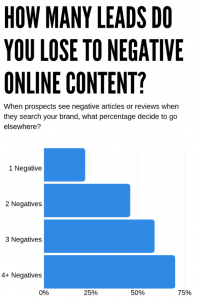— January 17, 2019
The bar for IT support is already high. New-gen startups have made exceptional digital customer experience their central selling point, challenging more traditional companies to keep up the stakes.
However, delivering that support also requires significant capital investments – both financial and human. The wrinkle? Companies now spend billions in recruitment to find the right talent, only to have to replace that talent in a year or so. According to a recent LinkedIn report, the tech sector has the highest turnover rate in every industry sector – 13.2%. Yes, even higher than retail. Even at that giant Amazon, the average tenure of an IT employee is one year.
And it’s not just the clear costs of constantly hiring new talent. What happens to IT projects that are in the works when a critical employee leaves? What about security issues when that critical employee is poached and has proprietary information? This is just one of many reasons why companies of all sizes are increasingly looking to managed service providers (MSP) as a solution to their IT needs.
Should you consider this route as well? Perhaps. Though you should first assess the in-house vs. managed IT and determine which solution indeed matches your company needs.
In-House IT Support
When you have a fully developed internal IT department, your IT infrastructure is physically housed with you. Certainly, there are clear benefits to keeping the staff on-premises as well.
The Benefits of In-House IT Support
- There is immediate, face-to-face access when issues arise, and total control over the resolution of those issues.
- An in-house team has a deeper understanding of the entire organization, its culture, and its internal infrastructure. This intimate knowledge may make that internal team better equipped to communicate with the key players in all departments for project work and for troubleshooting.
- Upper level management just seems to be more comfortable knowing that their IT operations are right there rather than housed “out there,” depending on an MSP and a service level agreement (SLA).
The Drawbacks of In-House IT Support
- Recruitment, employment, benefits, and replacement costs – these can put a real dent in any organization’s budget.
- Hardware and software costs, including replacement and updates – another big expense to consider.
- Security – According to a Harvard Business Review report, the biggest threats to security are internal – disgruntled or compromised employees or just plain inadvertent activities that allow hackers to infiltrate your IT infrastructure. 2018 has been a rocky year security-wise. 2019 will require most companies to take a more proactive stance on cybersecurity.
- Innovational bottleneck – assigning the majority of resources to maintenance means that you are hampering your ability to launch new in-house projects as the majority of your efforts are geared towards supporting “what’s already there”. Scaling is complicated as well. You constantly need to engage in a “balancing act” of re-distributing resources between support and execution.
To defray some of these drawbacks, many businesses are now opting for cloud infrastructure, powered by Amazon Web Services (AWS). This an all-encompassing cloud platform that provides infrastructure, platform, and software packages as services. Cloud migration can significantly reduce the total ownership costs for infrastructure and speed up the productivity of your development teams – considering that you shift to a continuous delivery model post-migration.
To majorly benefit from AWS, however, a company must still have an internal IT staff to manage the migration processes and day-to-day services orchestration. Cloud infrastructure is great, but it is not the “magic bullet” that relieves a company of all of its IT needs. And to gain the flexibility that customized solutions require means internal specialists who are experts in AWS.
Managed IT Support
In short, managed IT involves outsourcing your IT needs and services to a strategic partner, who will take on the responsibilities of transforming, running and managing the outsourced business process, in-line with your business goals.
The Benefits of Managed IT Support
- Employment costs are obviously significantly reduced. Managed services involve a predetermined fee to a provider, and that establishes a set amount for your budget, rather than all of the costs of recruitment, replacement, onboarding, and training. You will need a much smaller IT staff to work with that provider, but that’s it.
- Overhead costs are reduced. Obviously, hardware and software purchases, update, repairs and maintenance are big budget items, as is the additional space that may be required for a fully staffed in-house IT department. A study conducted by ROI consultancy firm, Alinean, Inc. found that mid- to large-sized companies spend between 4 – 6% of their total budgets on IT. Managed service provider costs can be significantly lower.
- Skillsets are always an issue. As businesses need to keep pace with rapidly evolving technology (e.g., data science, AI/ML, blockchain), they must either increase their staffing or provide the necessary training. Managed providers already have teams of pros with these skill sets.
- Support. Managed service providers will offer 24/7 IT support and monitoring, so that issues can be addressed quickly and without downtime, because it happens to be after hours or an in-house specialist is ill or on vacation.
- Security. There’s a lot to consider here, some of which was covered above. Good providers have strong security measures in place, the means to detect threats and head them off, provide proactive updates and maintenance, and generally take the internal security threats off your table. Around the clock vigilance allows proactive monitoring and rapid incident resolving.
Are there some drawbacks to using a managed service provider? Of course.
The Cons of Managed IT Support
- It may take some time to do the research and find the right match between your needs and what a service provider can offer.
- A service level agreement (SLA) may take time to hammer out, and you will need to have your goals, needs, and budget parameters clearly in mind as you approach negotiations.
- There may be some initial discomfort on the part of management when IT services are outsourced. Change can be difficult.
Clearly, using the right managed service provider is a winning solution. Making the move may be a bit time-consuming and uncomfortable at first. It is sort of like sending a child off to school for the first time and giving up “control.” In the end, though, the benefits of managed services far outweigh these initial issues, and a peace of mind gradually settles in.
Originally published here.
Business & Finance Articles on Business 2 Community
(49)








